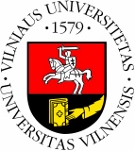Studies and researches
2/2025
International Standards and National Specificities in Large Economies: USA, China and EU
International Standards have seen for the past decades
one of the most pronounced increases in adoption and usage across the globe. As
International Standards become not only an indicator of the quality of economic
processes deployed, their spread signals the level of integration in the world
markets as they align to common practices. In this paper, I explore the
dynamics of International Standards’ adoption over the past decade, and the way
in which these have been developed and adopted. I focus especially on regional
differences, in the case studies of the largest economies today: USA, China and
the EU. I show how sometimes national standards prevail over international
standards, and how this is an instrumental tactics for meeting protectionist
objectives. A specific case study in the field of international standardization
studies the medical standards that benefit from the additional oversight of an
International Organization (i.e. World Health Organization (WHO)). WHO has
provided unitary guidelines of implementation across the globe, and has
furthered significantly the homogeneity in this particular field.
International Standards, globalization, developed economies, USA, China, EU
F23, L15, I18, P52
F23, L15, I18, P52














